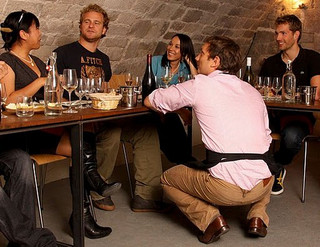
Welcome to the second in our five-part series about Recap Reporting, Brand Strategy, and Event Marketing Measurement. In our first article, we discussed reaching the right consumer, changing their purchase behavior, and generating a return on investment. In this article, we move on to “Reach.”
How often is your event marketing program reaching the right types of consumers? Is it doing so consistently? When we are tasked with evaluating any event marketing program, the first thing we consider is “Reach.”
Typically, there are three questions to consider:
- How many people are you reaching per hour of staff time?
- Do the people reached fit the brand’s demographic target?
- What percentage of the people reached are current customers?
It is common practice in the event marketing space to capture the core metrics that answer the first question. Everyone collects the number of consumer engagements, but they often miss the mark by failing to collect the number of staff on-site and the number of hours they worked. I’m talking about capturing the total number of execution hours. If, for example, you had three people working a six-hour shift, you’d have 18 execution hours.
Are you reaching enough consumers?
Execution hours are critical because they allow you to measure your performance across events against a standard. If you engaged 1,940 consumers over 18 hours of execution time, you can say you’re engaging about 108 people per hour. That is a solid number. In fact, we regularly average 107.3 engagements per hour overall and 78.6 per hour when wet sampling.
Industry Benchmark: 107.3 Consumers Engaged per Hour (78.6 for wet sampling)
Why track demographic targets?
With the reach metric established, we can begin to look at the quality of the engagement. You need to know if you are positioning yourself to hit the target audience. You can’t hit the target if you are aiming the gun in the wrong direction. If you’re looking to reach women 30 to 39 years of age, but you’re predominantly engaging 24 to 28-year-old men, something is wrong. A brand develops consumer targeting because the target aligns with the brand’s growth strategy, it’s the shortest path to purchase or both. If you’re not hitting the target, you’re going to reduce your impact and damage your overall return on investment (ROI).
Being on target 40 to 50% of the time is average, 60% is great, 70% or more is fantastic. The important question is, “Does your client really want you to be average?”
Is your program about consumer loyalty or acquisition?
Are you talking to current customers or non-customers? At the end of the day, your program is either a loyalty program or an acquisition program. This is defined by the percentage of current customers visiting your footprint. Don’t think that a low penetration brand has nothing to worry about. We often find that a product with only 10% market penetration will see 20% or more of event patrons as current customers.
You’ll over-index because current customers will seek you out, wanting to hang with “their people.” But so long as you keep this under control, you’ll be able to argue that you’re reaching the right consumers at an effective pace and creating the opportunity for new customer purchase. The next article in our series will address the issue of knowing if you actually created purchases as a result of an effective reach.
Continue with Part 3 of This Five Part Series >>
Photo Source: http://farm2.staticflickr.com/1360/4729343543_d9951a9e23_n.jpg
